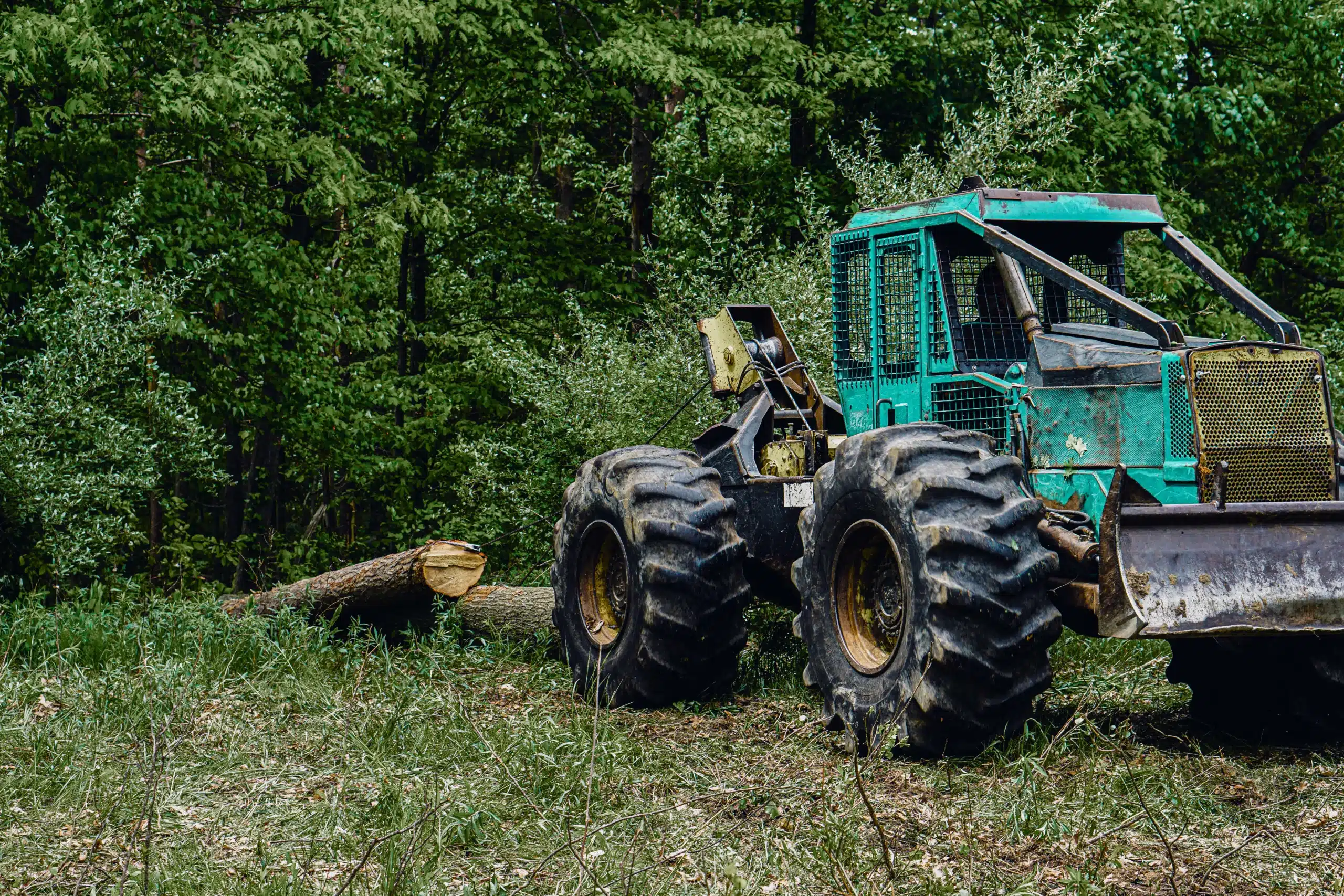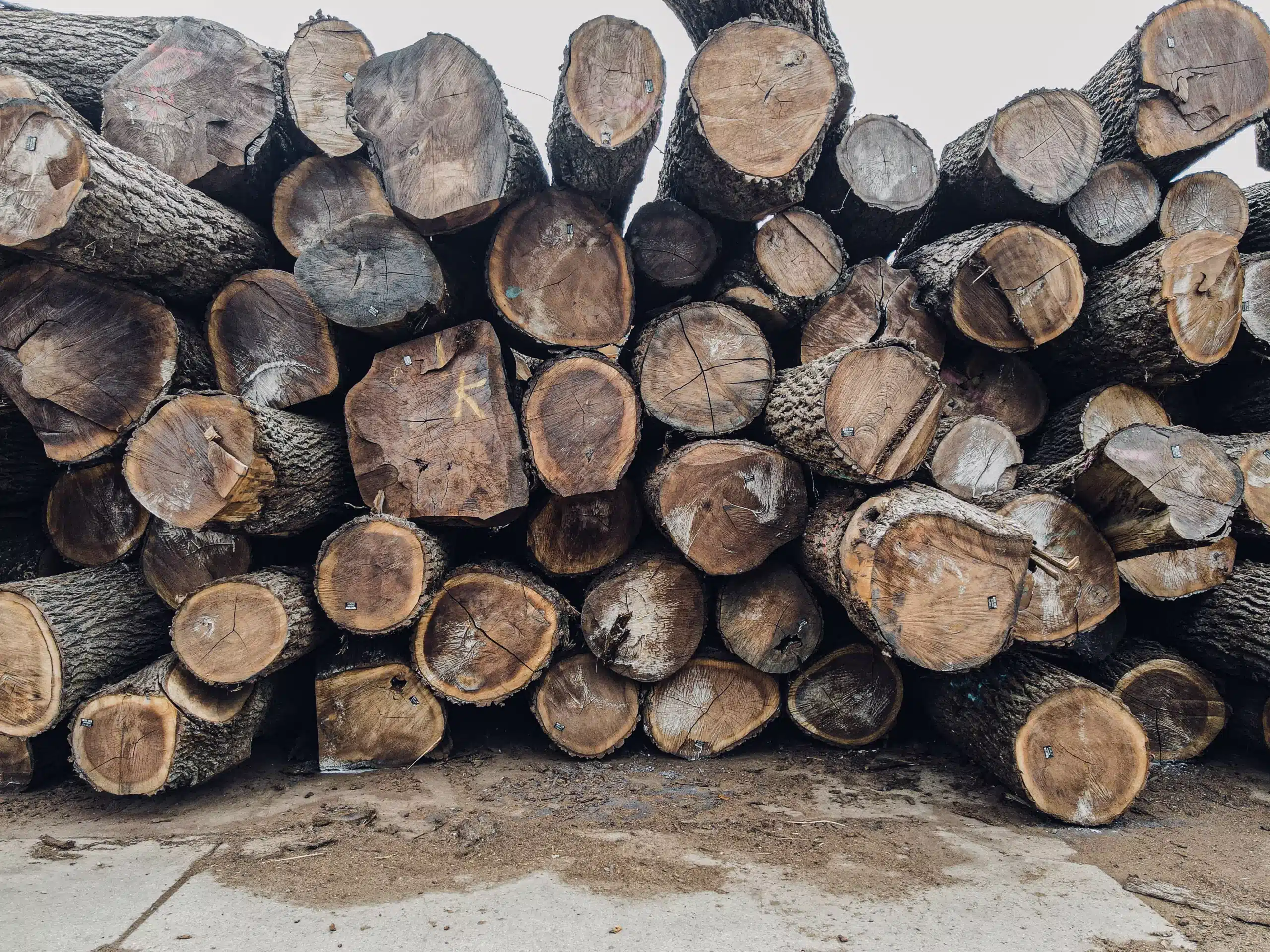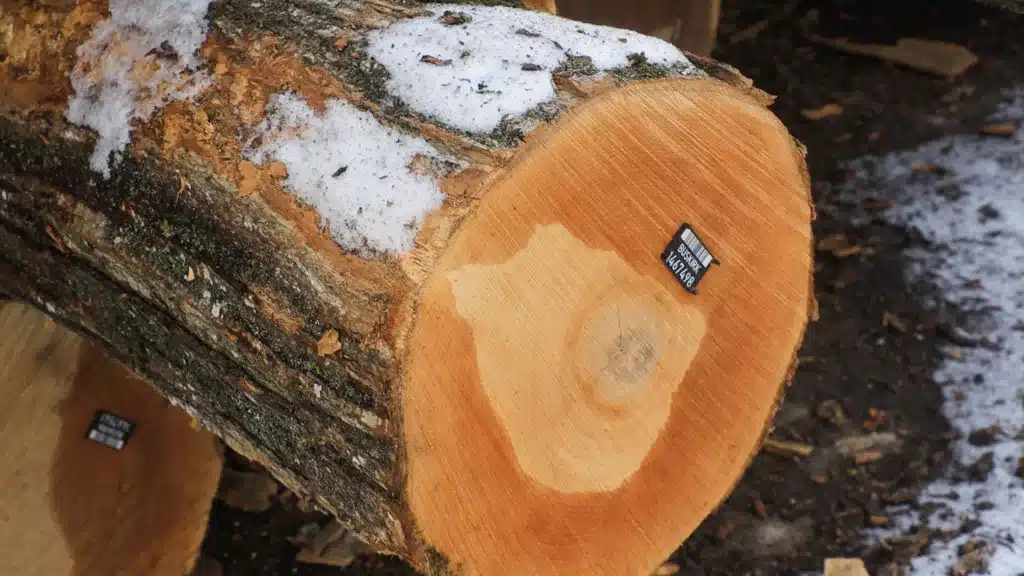Looking for the best time to harvest trees from your woodlot? The winter months are one of the best times for harvesting sustainably while reducing environmental impact. Not only does a winter harvest align with your woodlot’s natural processes, but it also helps to minimize effects on the soil and vegetation of your property.
While sustainable forest management can take place at any time of year, read on to see some of the unique benefits of harvesting in the colder months.
Frozen Ground Means Less Compaction & Easier Transportation
A timber harvest requires large equipment like log loaders, skidders, and grapples for transporting the felled timber through your woodlot and onto log trucks. This machinery goes back and forth through your woodlot multiple times—so minimizing soil disturbance and compaction is an important part of planning the harvesting routes.
What is soil compaction? Soil compaction is when the soil particles get pressed together, reducing the pore space between them. It happens when external forces (like heavy machinery or excessive foot traffic) compress the soil. This compression makes the soil more dense, also making it harder for air, water, and roots to move through the soil. This can negatively impact plant growth, nutrient uptake, and water infiltration, affecting the overall health of the soil and ecosystem. During warm or wet seasons, the risk for soil compaction is higher.
This is where the winter months are beneficial. When the ground freezes and the water within the soil turns to ice, it provides a much more stable path to support the weight of heavy machinery without causing ruts, compaction, or extensive damage. It acts as a protective barrier, preserving the soil structure and minimizing the environmental impact of timber harvesting.
The frozen ground also facilitates smoother transportation of harvested timber. Snow-covered paths and icy surfaces create a firm and even terrain for quickly transporting your timber from the harvesting site to the sawmill. This reduces the likelihood of vehicles getting stuck in mud or uneven ground, a potential challenge in warmer seasons when the soil is soft.
The combination of frozen ground and reduced soil compaction not only preserves the health of your forest and property but also streamlines the logistical aspects of timber harvesting: allowing us to operate more efficiently and with less environmental impact during the winter months.

Lower Sap Content
With the shorter daylight hours and colder temperatures, the trees in your woodlot undergo a dormant state in the winter months. During this dormancy, they reduce their physiological processes, including sap production.
This is advantageous in timber harvesting: When a tree has lower sap levels, the wood is less prone to issues like warping, splitting, and decay. The reduced sap content means that the harvested wood is more stable and less likely to experience negative effects during the drying and processing stages.
Furthermore, the lower sap content makes the wood easier to work with during harvesting operations. Cutting through wood with lower sap levels requires less energy and results in cleaner, smoother cuts. This contributes to the overall efficiency of the harvesting process and ensures that the quality of the timber is maintained.
Thinner Canopy
During the winter months, deciduous hardwood trees shed their leaves, resulting in a thinner canopy within your woodlot. This provides both better visibility and easier access to the targeted trees. This allows us to selectively choose trees based on timber quality, health, and suitability for harvesting—resulting in a more efficient and strategic harvesting process.
Learn more about Michigan’s most popular hardwoods.
The reduced density of the canopy also lessens the impact on the forest floor and understory vegetation, promoting natural regeneration and minimizing disturbance to wildlife habitats.
Overall, the thinner canopy not only contributes to the efficiency of timber harvesting operations but aligns with responsible forestry practices that prioritize both ecological sustainability and operational effectiveness.
Minimized Wildlife Disturbance
Many wildlife species either hibernate, migrate, or enter a state of reduced activity in the winter months. This dormancy or altered behavior means that your local wildlife is less likely to be directly affected by timber harvesting activities.
When you align your forest management activities with these natural processes, you don’t have to worry about disturbing breeding birds, foraging animals, mating species, and more.
The winter season provides a strategic window for timber harvesting, ensuring that the noise and disturbance associated with tree felling have a minimized effect on local wildlife habitats. This consideration aligns with responsible forestry practices, allowing for the extraction of timber while being mindful of the natural behaviors and habitats of the animals that call our Michigan forests home.

Buskirk Lumber: Sustainably Harvesting Michigan’s Hardwoods Since 1920
Harvesting sustainably from your Michigan woodlot not only helps you make passive income from your land, but keeps your forests healthy for generations to come.
Located in Freeport, Michigan, Buskirk Lumber has been a partner in sustainable forest management for over 100 years. We are proud to operate a sawmill and dry kiln facility and are cash buyers of standing timber. We currently service Michigan’s Lower Peninsula, Northern Indiana and Northern Ohio.
Send us a message to find the value of your timber or give us a call at (800) 860-WOOD.

